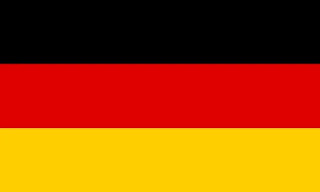Historical Facts: American and Japanese Rule in the Philippines
This was based on Reader's Digest: The Story of the Filipino People - Parts 6 and 7 (Under the Stars and Stripes and The Japanese Occupation) by Milagros C. Guerrero and Ricardo T. Jose.
Now that I think about it, I would call the Spanish occupation "the first storm," the American occupation "the second storm," and the Japanese occupation "the third storm." The "between the storm" parts would be 1898 - 1901 and 1935 - 1941.
Part 1 - The Second Storm (1901 - 1935)
After the Philippine-American War, the United States turned the Philippines into a colony. They gained it in the Treaty of Paris along with Puerto Rico, Cuba, and some other islands. The Americans needed to keep it away from Spain, France, and Germany.
Under Spanish rule, the Filipinos were taught Catholicism. But the Americans were mainly Methodist (a sect of Protestantism). American missionaries were sent to the Philippines, although most Filipinos remained Catholic.
The Americans made many schools, such as the University of the Philippines. However, the Americans might have used these schools to brainwash Filipinos into thinking that Americans were superior.
Part 2 - Between the Storms (1935 - 1941)
In 1935, Washington decided to give some freedom to Manila. They established the Commonwealth of the Philippines. This was not a 100% independent nation, but it was a stepping stone towards Philippine independence. In 1946, that finally came. But we're not there yet. The leader of the Commonwealth was Manuel Quezon.
However, another threat was coming. As early as 1905, when Japan defeated Russia in the Russo-Japanese War, the Americans worried that the Japanese would dominate the Pacific. (Japan grew very prosperous in the mid-19th century, and by the 20th century, they were a great power.)
Part 3 - The Second Storm (1941 - 1945)
"Yesterday, December 7, 1941, a date which will live forever in infamy." Those were the words of Franklin D. Roosevelt describing the Japanese attack on Pearl Harbor during World War II. Since the Philippines was part of the commonwealth realm of the United States, they were also attacked by the Japanese. On April 3, which was Good Friday, the final Japanese offensive was launched.
A puppet government was established, known as the Second Philippine Republic. Its leader was Jose P. Laurel. (He is actually quite controversial in the Philippines, with some calling him a Japanese puppet, and others calling him a nationalist. Quezon told him to collaborate to avoid oppression.)
One of the worst events of the Japanese occupation was the Bataan Death March. Prisoners were made to march from Mariveles to Capas in Tarlac. Many were shot during and after the march. Luckily, some Filipinos secretly provided food for the soldiers.
At one point, General Douglas MacArthur fled to Australia. He declared, "I shall return." He kept his promise and helped liberate the Philippines. The Leyte Campaign was one of the most significant events in the Philippines during World War II. With the Japanese surrender in September 1945, the Commonwealth was restored. In 1946, the Philippines finally regained independence.
Part 4 - Conclusion
This was a complicated history. The Philippines gained independence first on June 12, 1898. Then, they got it again on July 4, 1946. Initially, Independence Day was July 4.
But eventually, it was changed back to June 12.
Well, that's it. Bye!

